A Kahoots Interview
What do hooves, digestion, soil, and your molars have in common?
HOPE! I am so excited to share this video! First of all, after 3 months with the Portland Parks and recreation researching sustainable park landscapes my new mantra has been “SOILS SOILS SOILS!” With ecologically healthy alive rich soils everything else can thrive. That’s where growing, all growing starts. Now I have had a new aha moment. “Hooves are mothers natures molars.” Just like the bacteria in our own gut helps us to digest nutrients for use in our bodies, so do the microbiology of living soils help plants to absorb nutrients, but we don’t swallow are food whole. We chew it first and this is what grazing animals do to plant material as they trample it. They break it down and fertilize the lands. This video is fabulously informative and offers such elegant solutions that address ecology, economy, and social health. Please watch. Lets discuss!
What can you do in your gardens? Mulch!
Outside Fall Fun Idea – Leaf Maze
Have you ever played Mail Carrier with the leaves?
Yesterday we raked the leaves to create different streets in our neighborhood and used individual leaves as letters.
I had a wonderful mail carrier.
She took letters for me all the way to My aunt in Florida, the president of the united states, and Santa Clause.
She even knew to make Santa’s letter a priority!
What tree is that?!
 How to identify your NW favorites!
How to identify your NW favorites!
A few years ago some friends mine moved away from their hometown in the Pacific NW. They moved to LA if you can believe it, and then they had a baby. We had studied plants together at the UO and I was not about to let his little one miss out on the beauty of our NW Landscape so I made her tree silhouette flash cards.
What is a tree silhouette you ask?
Ever notice how you can spot a good friend from a block away without seeing their face. Its the same thing with your favorite trees, you can see from a distance the particular growth habits of different trees. For me its much easier to identify a tree from its silhouette then up close trying to piece together bark and leaf patterns. Its something about how my brain works.
See the big picture.
Designing landscapes is the same way, its soo easy to get caught up in details and feel stuck. Yet, when you step back and look at the big picture, so often things just fall right into place! That’s why master planning is my favorite part of the process. I get the joy of helping my clients let go of the problematic details and step back and see the big picture of possibilities for their landscapes.
You might find it easier too!
Take a look at the silhouettes below and then keep your eyes open as you walk your neighborhoods. You will certainly start to notice the overall form and character of your NW favorites. You just have to keep your eyes open to the bigger picture.
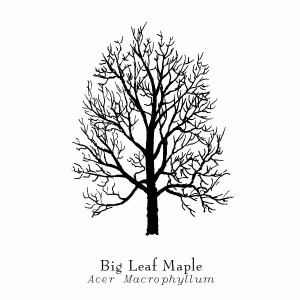
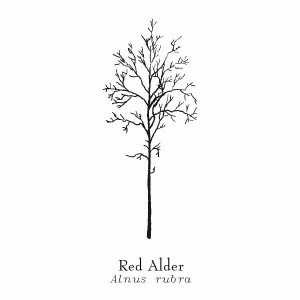
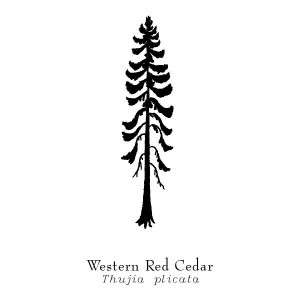
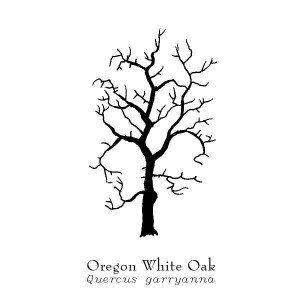



Fall Gardening Specials are Back!
Summer gardening gotten away from you?
Tidy your garden for fall and get a head start on spring with our Fall Garden Specials!
The Surpising Story of Camp Attitude!
A month ago I got to visit Camp Attitude, a summer camp for physically challenged children and their families on the Santiam Highway just past Foster Lake.
My favorite part of Camp Attitude was the paved trails through lush native Oregon forest. I didn’t take any pictures I was so engrossed with the beauty and diversity of plant life that was accessible to everyone at camp, and the air on those trails was so fresh!
Also at Camp Attitude there is fishing, a petting zoo, a talent show night, horse back riding, (they have one of the horses from Dr. Quinn Medicine Woman! I was a huge fan.), swing sets for everyone, river floating, campfire circle, and more.
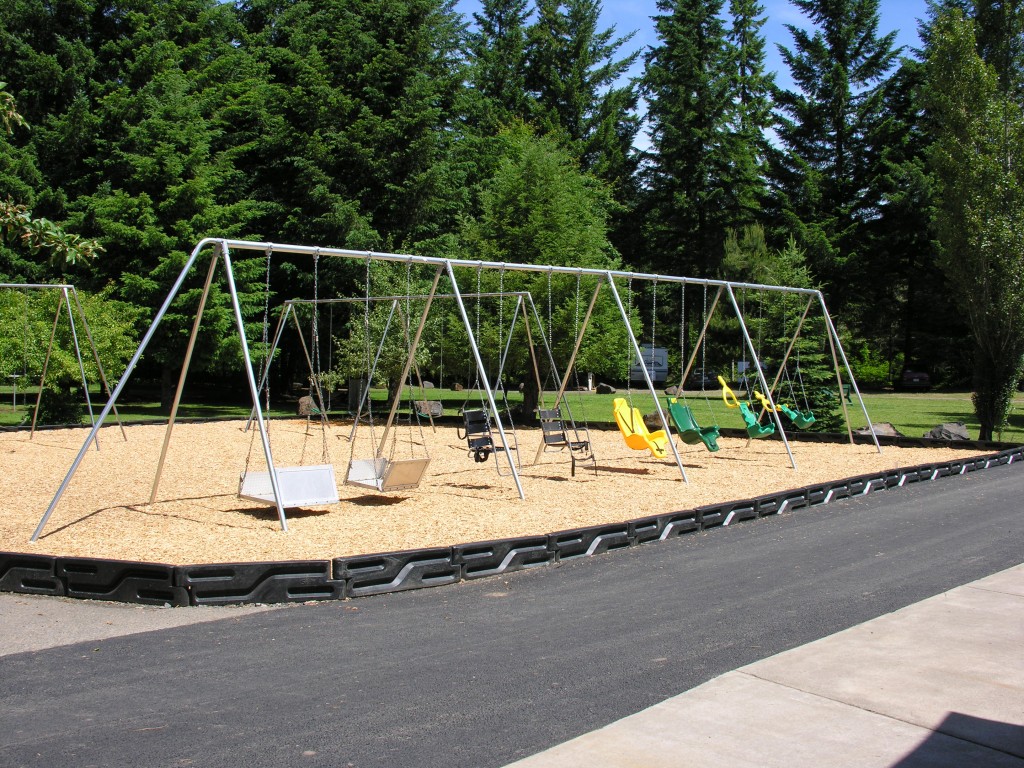
Accessible swing set for all variety of physical abilities. The swinging platforms closest to the camera allow wheelchairs to drive right up onto the swing without having to change seats.
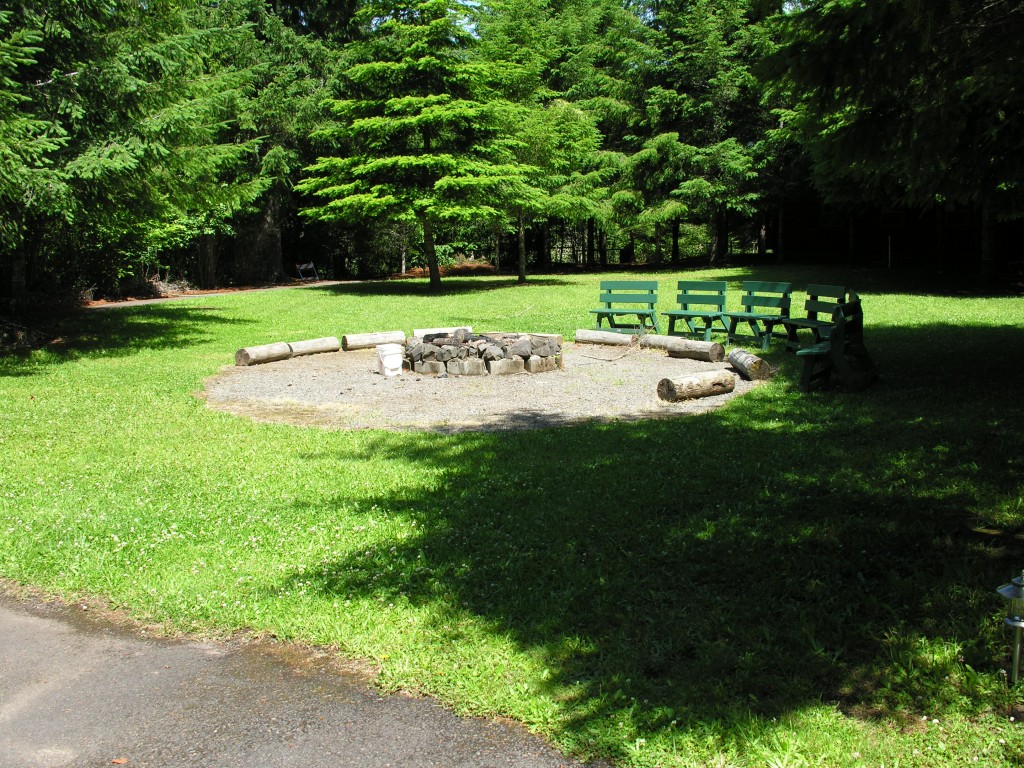
Camp fire circle with more places for wheel chair spaces than benches.
I was visiting Camp Attitude with a number of design and camp consultants to discuss with the board members their long term master plan for camp. They haven’t yet had a master plan for camp and it shows. There are a number of lovely spots on camp and some great activities available, but the overall layout is a bit unorganized and they have a serious challenge with their sense of arrival. That’s why we were all there. That and they are looking to build a dining hall, which they currently are lacking, as well as a salt water swimming pool.
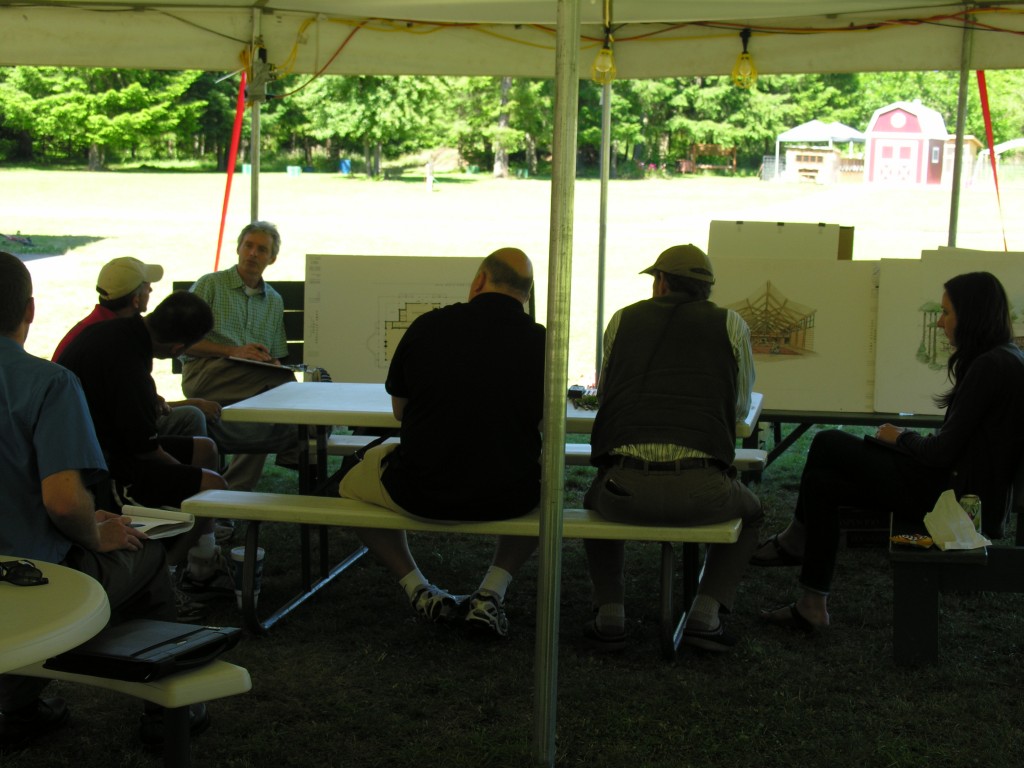
Design Charette, ead by Rowell Brokaw Architects, included representatives from the Camp Attitude Board of Directors from Trips Inc, Cascadia Consulting, University of Oregon Landscape Architecture graduate program, and Creative Housing Solutions.
Dreaming of Salt Water Swimming Pools
Why a salt water swimming pool you ask? Camp Attitude knows how to dream big. Swimming in a salt water pool allows you to float much more easily, the salt content of the water increases your buoyancy, this is especially helpful for a physically challenged child. What’s more, swimming is a fantastically freeing experience for those who spend significant amounts of time in wheel chairs. Camp Attitude’s dream saltwater swimming pool also includes the facilities that make accessing a pool via wheel chair very easy.
The thing is, salt water swimming pools are great for everyone, not just kids with seemingly limited physical abilities. The whole family feels a bit lighter swimming in a saltwater swimming pool. (I haven’t even mentioned the reduced exposure to traditional pool water chemicals.)
That is really what Camp Attitude is about, creating space for the whole family to feel a bit lighter. Friends and memories are made at camp. Moms get to support each other, Fathers meet and exchange stories, brothers and sisters who often feel forgotten, find understanding with other siblings, and children who so often feel alone and singled out for their physical limitations meet other children with varying degrees of physical challenges and learn together how much life they are capable of living.
Everyone is reminded that they are only as limited as they allow themselves to think they are.
Camp Attitude is free.
Yup, that’s right, for the entire family, Camp Attitude is free. There are no paid staff at Camp Attitude either. It is all volunteer run. In fact, the volunteers pay to come to camp. There are cooks, organizers, office staff, and family buddies. All volunteers.
Here’s how it works
Families who already spend a lot of money on the health and well being of their family get a free week at camp. This is huge because often paying for vacation and planning a vacation that takes into account the physical challenges of a child can be a huge hassle and expense and not very relaxing for anyone. So vacation at Camp Attitude is free. There are things for everyone in the family to enjoy regardless of ability or age. The whole family meets new people, makes new friends, sees the world through fresh eyes, and enjoys the scenery and natural features of camp. Everyone gets a vacation.
The whole family goes home rested and rejuvenated, buoyed so to speak. They tell Grandma and Grandpa, they tell aunts and uncles. They tell people at church and the neighbor down the street. And then all those people in their community realize what a gift a week at Camp Attitude is for their loved ones and quickly become Camp Attitude fans, often volunteering their time or money to show support.
Camp Attitude clearly has a vision, getting that down on paper in an illustrated master plan will allow them to begin writing grants and sharing their story with organizations eager to support camps with the clarity of purpose and mission like theirs.
If you want more of the Camp Attitude story and details here’s the Camp Attitude website.
Garden Tours with Uncle Alan 4 The Mississippi Begins…
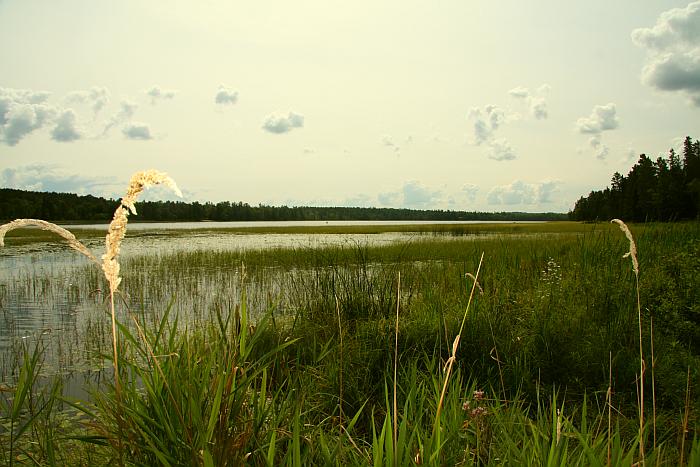
This is Lake Itasca, in Minnesota, the source of the Mississippi river.
Here is the actual beginning of the river…
Silly people come here from all over just so they can say they waded across the Mississippi.
Silly people. *Editors note: this silly person is my dear Uncle Alan Kruetzer.
But I wonder: How did they decide that this was the Mississippi? As you come up river you come to lots of places where, say, the river goes right, and a tributary comes in from the left. Couldn’t you just as easily say that the tributary is on the right, and the left fork is the river? So what we call the Missouri is actually the Mississippi turning west at St Louis, and the one going north from there is, say, the Minnesota River?
But! It’s been decided! It’s been officially certified, by the National Bureau of Making Decisions About Rivers, that this river, and no other, is the actual, genuine, bona-fida Mississippi River!
So the silly people all went away happy.
Flack Residence
I had the delight of working with Ms. Flack on her NW Portland balcony garden. In full shade all day we were able to create a fabulously lush textured garden scheme with varying shades of green foliage that will be interrupted by blossoms of pale pinks, lavenders, and whites throughout the year.
I was delighted with the results and Ms. Flack had this to say upon her first viewing of the freshly installed garden:
“OMG! This is so wonderful! I am over the moon excited! Thank you for making this truly my home!” (it was a text message)
Texts like that are almost as beautiful as this garden.
BEFORE:
AFTER:
BEFORE:
AFTER:
BEFORE:
AFTER:
Garden Tours with Uncle Alan 3 – The International Peace Garden
This is the International Peace Garden, on the border between North Dakota and Manitoba. The garden encompasses many acres on both sides of the border, most of it woodlands, only partially developed. But right in the center there is this formal garden. The international border runs down the middle, from right under my feet up to, and between, the towers in the distance.
This is an international boundary marker. There are markers like this at intervals all across the continent. This one is just behind the towers in the picture above. The border runs ahead through the middle of the “Chapel” — to the US and Canadian flags on either side of the podium are actually in their own county. We walked the length of the garden, making many international border crossings without stopping for customs.
We did have to stop at customs on the way out. The entrance to the garden is right at the border, between the US and Canadian customs booths. You can drive in without being stopped, but coming out, turning either way, you have to get approved. When congress passed the law requiring a passport to come back from Canada, North Dakota lobbied for – and got – an exception for garden visitors. Supposedly you can come back with any valid proof of citizenship. But I’ll bet they look at you pretty hard, in that case. (We brought our passports. They let us back in.)
(“You’re from Oregon?” he said. ” Long way to go to visit the gardens, isn’t it?”)
Plus a bonus picture. The last thing I expected to find 40 steps from the Canadian border: a cactus garden.
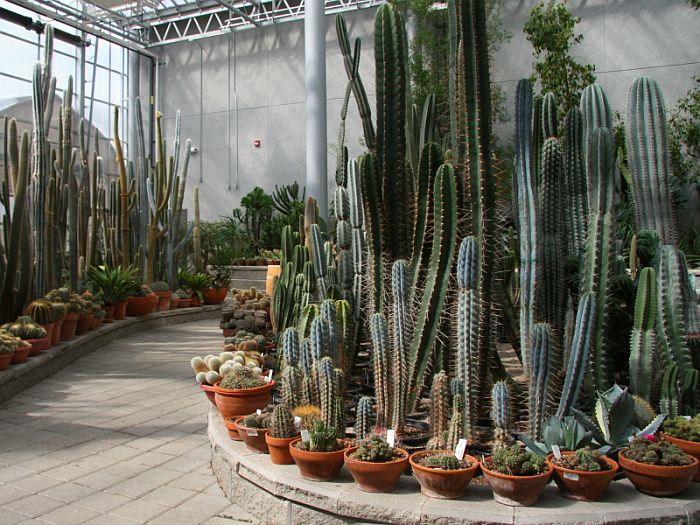
(OK. It was in a greenhouse. But I really wasn’t expecting it!)
A general comment about North Dakota: The colors seemed exceptionally vivid. The fields of wheat were truly golden. The grass was deep green, and the water in the ponds was a bright blue, and there was field after field of gaudy yellow sunflowers. I’m sure it’s different in the winter, when everything is in vivid shades of snow and ice, but in the summer it was memorable.
– Guest blog by Alan Kruetzer
Garden Tours with Uncle Alan @ The Knife River Indian Villages
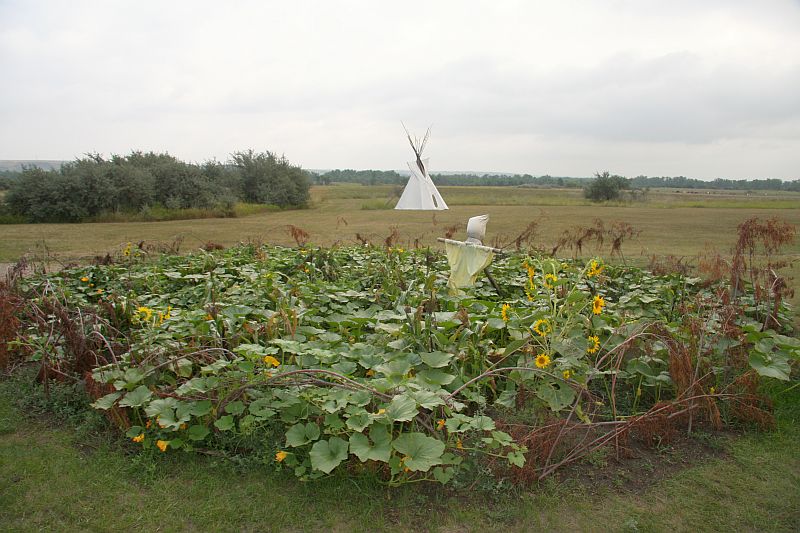
We stopped at the Knife River Indian Villages in the center of North
Dakota. This is where Lewis & Clark spend a cold winter, next to several
large villages earth lodges. The Indian men hunted buffalo, and the
Indian women planted corn, beans, squash, and sunflowers. Next to a
recreation of an earth lodge, they had a recreation of one of the gardens.
It;s kind of a small garden, but it’s a garden, so here it is..
(They put wooden platforms next to the garden that they used to dry the
plants after harvest. According to the park movie, the young girls would
sit on the platform and sing, to keep the crows and rabbits and young boys
from stealing the crops. Your Auntie Karen wonders if the really CUTE
young boys got away with more…) *Editor’s note: I bet they did.




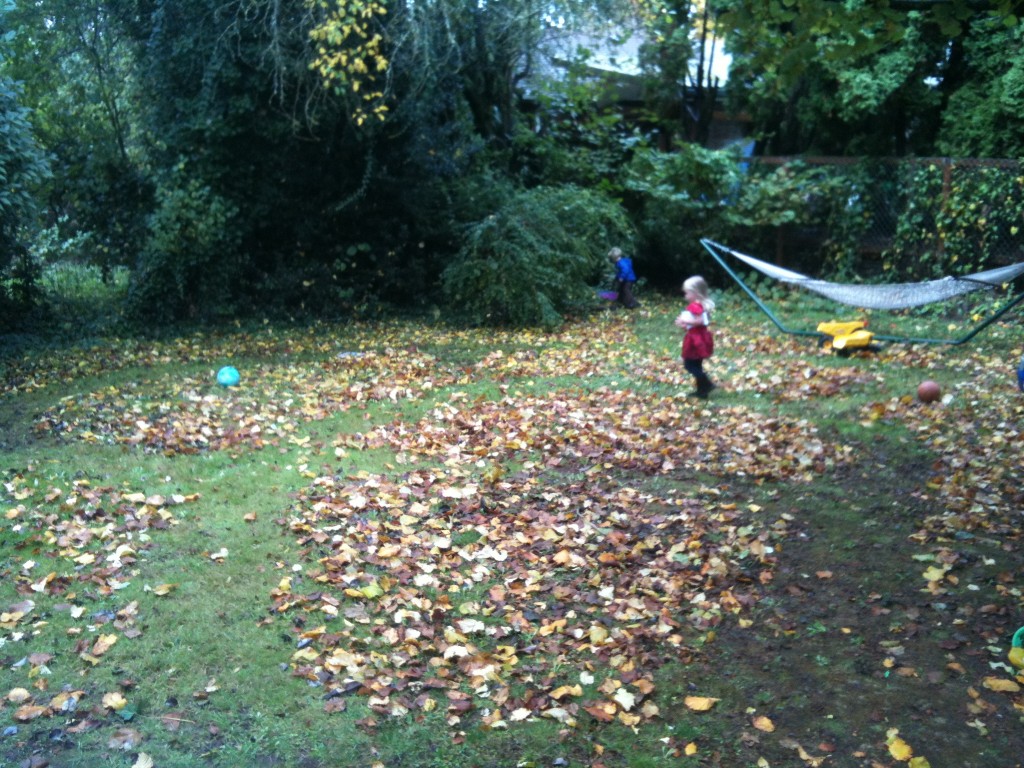

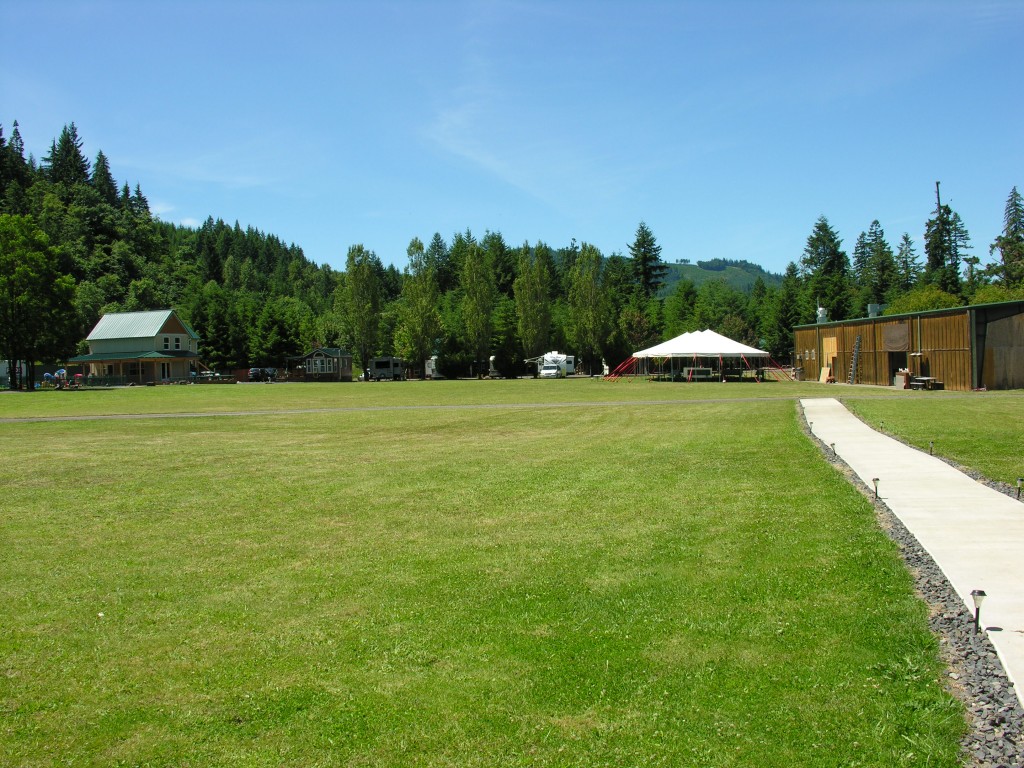
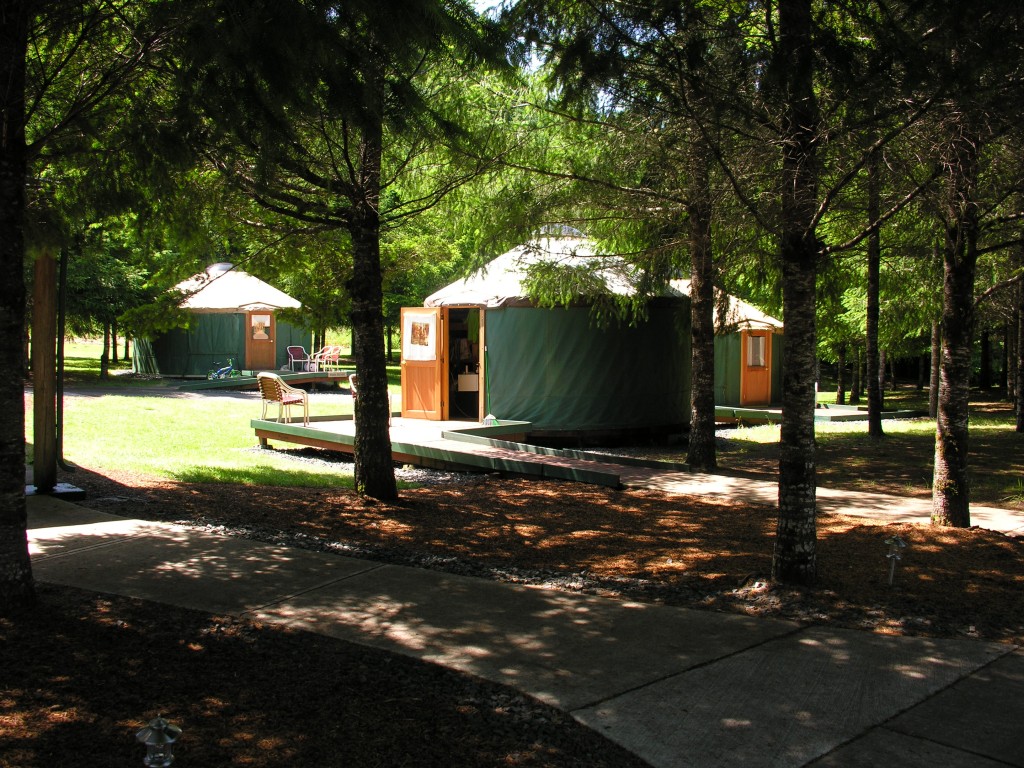
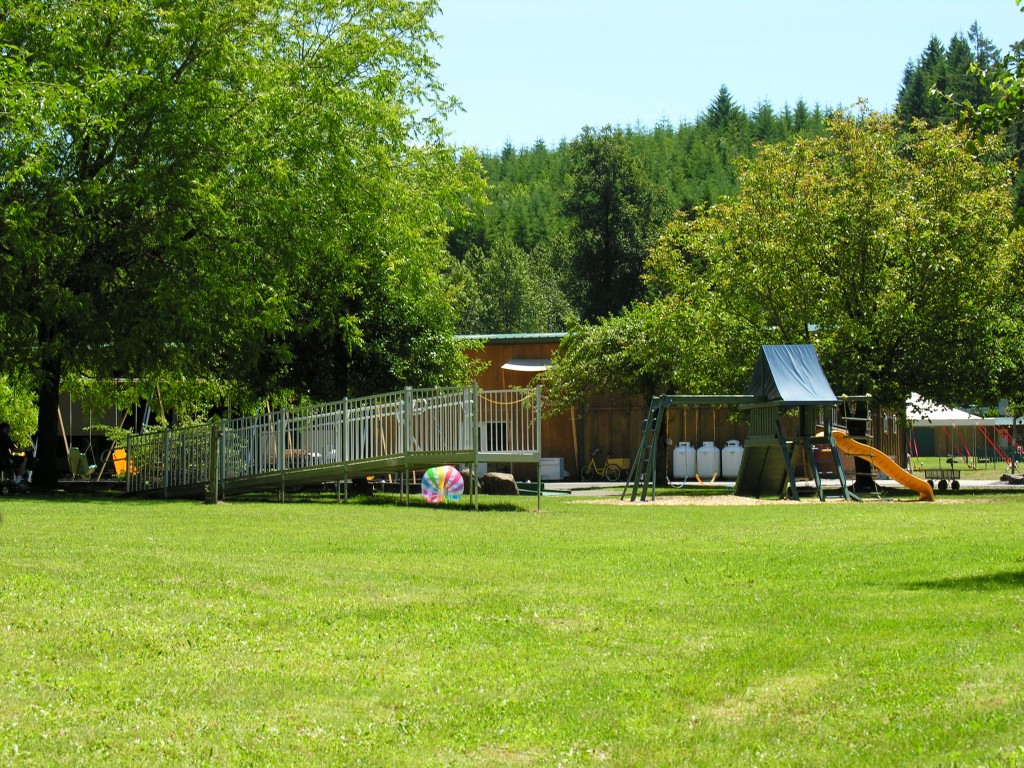
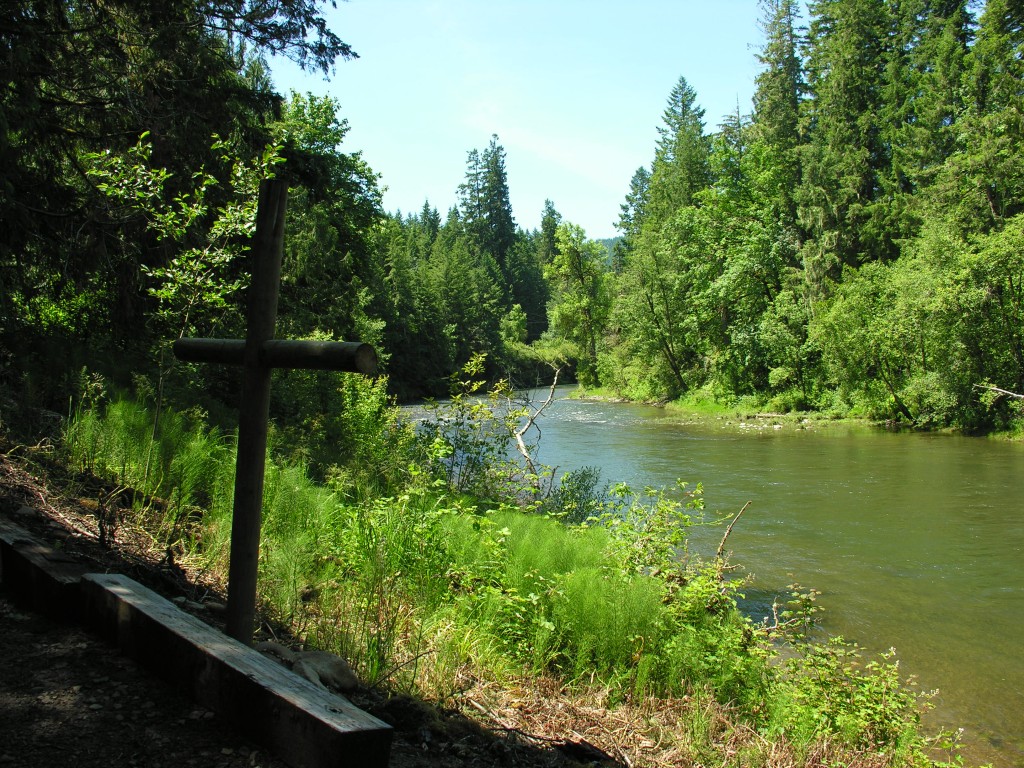
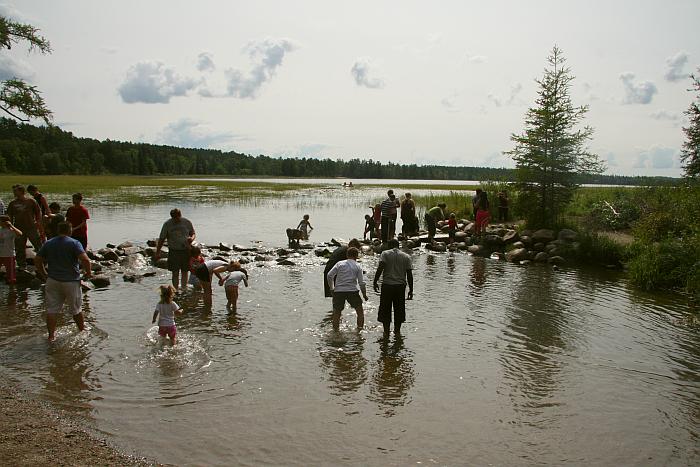
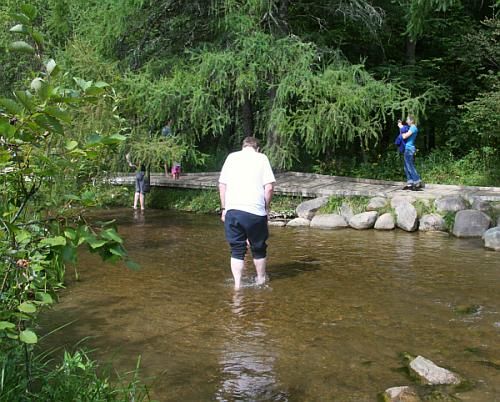
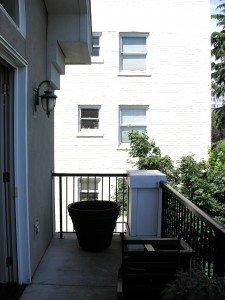
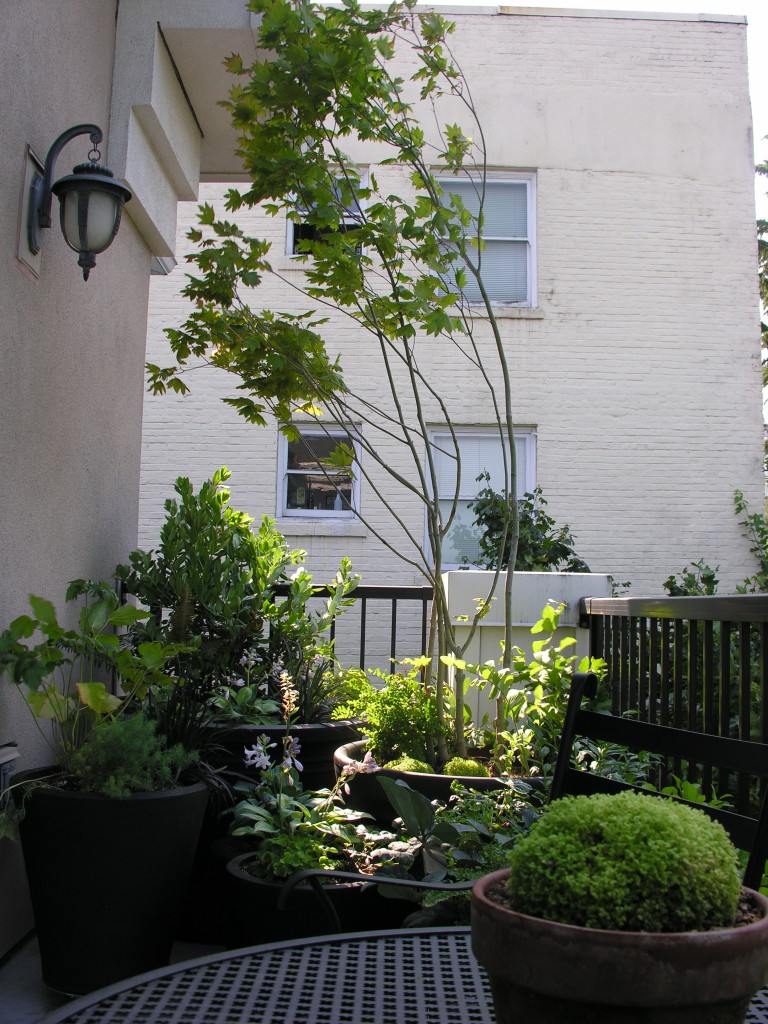
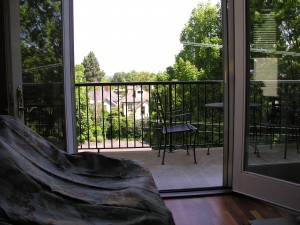

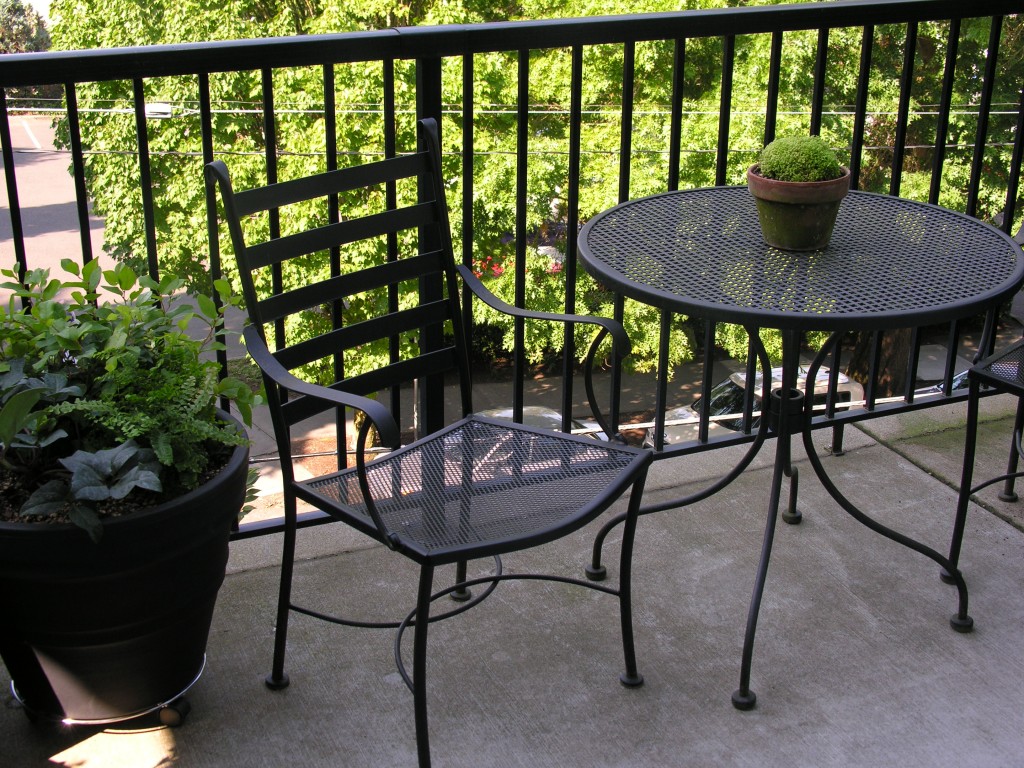

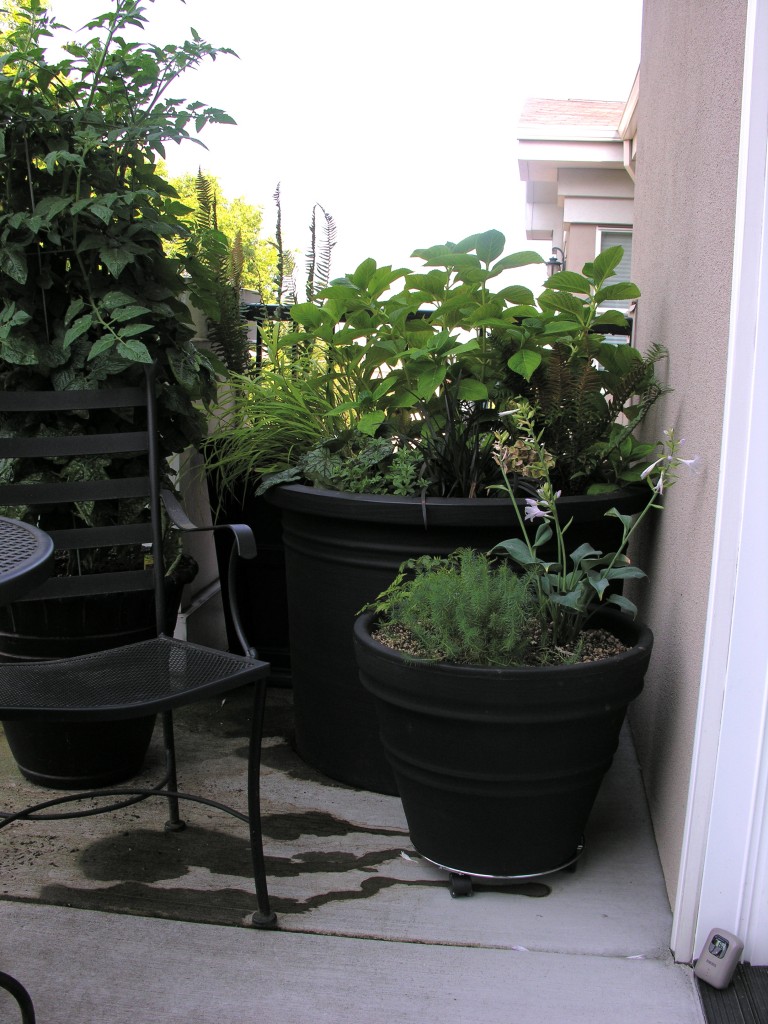
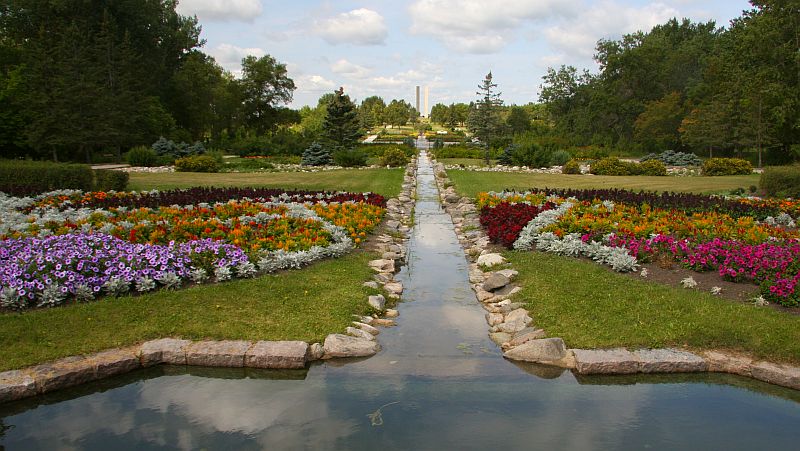
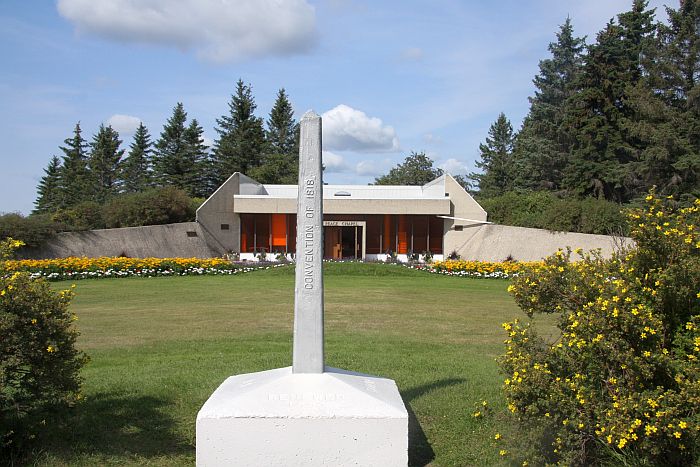
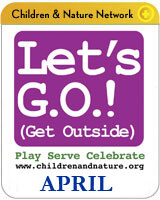



 Jaime English is the founder of Kahoots. She has worked with GreenWorks, an award-winning firm in Portland, and The Atelier Dreiseitl in Germany.
Jaime English is the founder of Kahoots. She has worked with GreenWorks, an award-winning firm in Portland, and The Atelier Dreiseitl in Germany.